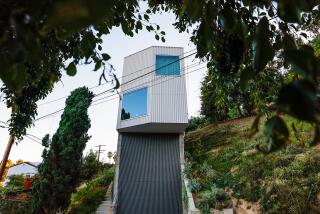Building Country Cottage Inside a Condo
When it came down to choosing between a tiny old house in a not-so-desirable neighborhood and a more spacious condo conversion in a safer area, I bought the condo.
The day escrow closed was the day I knew what I really wanted was a cottage. And that’s when I started remodeling. It might be a 1940s apartment on the outside, but inside it was going to be the country cottage of my dreams.
At first I didn’t want much, just country wallpaper and natural woodwork instead of thickly layered paint.
Little did I know the chain reaction I was starting when I hired the couple who removed the paint from all the moldings, doors and cabinets. They were wonderful. Every day I would come by (you couldn’t live there with the fumes), and every day the woodwork would get closer to its natural state.
The only problem was that the crown moldings I liked so much turned out to be plaster. So I had to hire someone to remove them and put in wood ones to match the other moldings.
Only, finding somebody who could put up crown moldings for a reasonable price was a lot more difficult than I had imagined.
The first worker I hired was about to make the first cut in the moldings I had bought when he suddenly realized that he didn’t know what he was doing and quit.
An out-of-work actor/carpenter told me all the other moldings had to be recut and he started recutting. I fired him after he wrecked the chair rail moldings but before he could ruin the crown moldings.
Getting up the crown moldings became less important as I started reading country decorating magazines and got pictures in my head of how some of the ideas would look in my condo:
A window seat in the dining room. How could you have a country cottage condo without one? A sloping ceiling in a bedroom, partly framing a window, as though the cottage roof slanted dreamily above it. Built-in shelves everywhere, sitting on top of windows and backing into closets and into the wall I had to build to set the window seat into.
And a stained-glass window . . . but where? I didn’t own the outside walls--it would have to go between two inside walls--giving a more open, brighter look to . . . the kitchen and the living room.
I knew I was going crazy. I was aware that it isn’t normal to start with no plan at all and turn a simple apartment into a fairy tale, using whatever workers you can get to show up.
Everyone told me to stop. It was too expensive. It was over-improved for the neighborhood. But even after a year went by and there was a hole in the wall where the stained glass window was going to be and the crown moldings were still on the living room floor along with 16-foot logs split to make beams for the master bedroom . . . even when I was still living in my old, rented house and paying for two places--I was driven to continue.
Because I had discovered the kitchen. And everyone knows the most practical remodeling decision is to upgrade the kitchen.
At first I was just going to put in the built-in, black cast-iron oven that looks wood-burning but is really electric, which I got mail order out of a magazine. But when the oven went in, I could see it really did need a brick wall behind it like the one in the ad.
But not plain brick. By now I’d gotten really creative, and I only used brick about three-fourth of the way up the wall, with knotty pine above it, and a shelf, like a mantle, running across the knotty pine.
Of course, the floor had to be brick, too, and did I dare put in a brick countertop to replace the white tile? Yes. With a marble inset in case I ever took up pastry making. And a maple butcher block counter where the stove and refrigerator used to be.
The refrigerator was moved to the service porch, and since it was there, might I not as well tear down the wall, making it part of the kitchen? Yes. As long as it wasn’t a bearing wall, which would entail a lot more work.
The worker I had at that time, whom I was paying by the hour, told me it was not a bearing wall and he knocked it down.
“Oh,” he said later. It was a bearing wall.
Paying by the hour turned out to mean, at least in my case, that you pay people for the mistakes they make and then pay them again to correct those mistakes. This seemed preferable at the time to looking for new workers every week.
After two years, the remodeling was done. There had been a long period when I wondered how I would know when it was done, but the crown moldings were up, the money ran out and that was that.
No more workers like the brothers who said, “We come early and work late,” and then showed up at 11 and left at 2, after ruining what was left of my wood. Or the actor/carpenter who disappeared after three days and called five weeks later, wanting to be paid . . . whining, “But it’s Christmas!”
In the end, I’m glad I didn’t hire a contractor with drawn-up plans and practical ideas. I get a satisfied feeling every time somebody walks into the kitchen and gasps because they’ve never seen anything like it before . . . and the harsher memories have faded.
But next time, I’ll buy a cottage.
READERS WELCOME TO SHARE THEIR REMODELING TALES
Readers wishing to share their remodeling experiences should send queries or manuscripts to Real Estate Editor, Los Angeles Times, Times Mirror Square, Los Angeles 90053.
More to Read
Sign up for Essential California
The most important California stories and recommendations in your inbox every morning.
You may occasionally receive promotional content from the Los Angeles Times.






